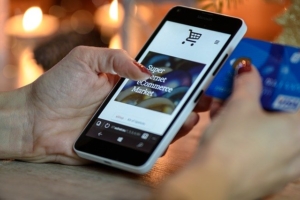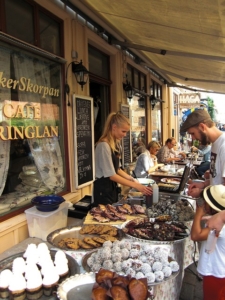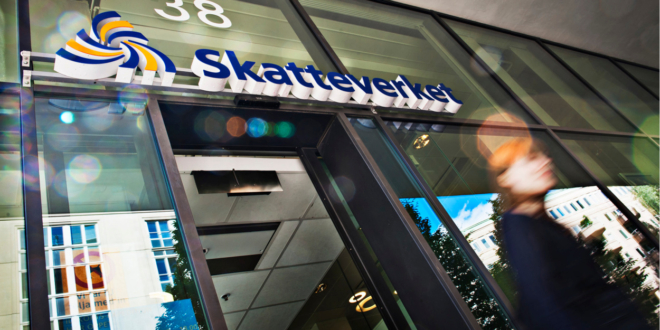by James Booth, VP, Head of Partnerships, EMEA, PPRO

Designed to increase consumer protection for online shopping and curb rising household debt amongst Swedish consumers (currently increasing at a rate of 7% per annum), the Swedish Parliament has approved an amendment to the Swedish Payment Services Act (2010:751). Coming into effect 1 July 2020, the new provision requires PSPs to ensure that their online merchants operating in Sweden prioritize debit payment options over credit-based payment options at checkout. As a result, the online merchant’s checkout page must:
1) Present debit payment options to the shopper first, when available
2) Ensure that credit options are not pre-selected.
These measures are to make sure that consumers don’t automatically use credit payment options without considering debit options as well; the customer must now actively choose to use a credit-based payment option. According to the legislation, debit options include bank transfers and debit cards. Credit options are credit cards, invoices, and installment or pay later payment methods. Interestingly, for payment cards supporting both debit and credit, the debit and credit options either have to be separated or treated in whole as one credit-based payment method.

It’s important to note that consumers in Sweden have welcomed this announcement. Recent research from Trustly, the popular Swedish payment method, found that 70% of shoppers are in favor of the new checkout legislation. Coupled with another finding that 60% of Swedes prefer to pay for purchases immediately with existing funds, it’s pretty clear that consumers in Sweden want more control of their finances and overall payment experience.
Could this be the next big thing in online checkout?
As many economies around the world face recession, will more regulatory bodies insist on making debit payment options a priority at checkout? We believe the answer to that is a resounding yes. Sweden is likely the first of many governments to look out for consumers in this way. However, with the increase in usage of bank transfers and e-wallets, we believe consumer payment preferences are headed in this direction.
For many Western markets – though certainly not all – credit and debit cards have been popular payment methods for consumers. However, alternative payment methods such as bank transfers, e-wallets, cash-based payments, and other payment types are currently the vast majority of e-commerce transactions globally; they are projected to move from over 65% to over 72% by 2023.

The language has shifted within the industry in recent years to ‘local’ payment methods because these payment types are no longer the alternative; they are the norm. Accepting local payment methods is vital for boosting business across borders and shopper conversion rates.
As a trend we’re seeing emerge globally, bank transfers are already the top payment method in Europe. Bank transfers are the most preferred way to pay in European countries such as in the Netherlands (making up 65% of e-commerce transactions), Finland (57%), Germany (52%), Poland (47%), and Austria (46%).
In fact, 24% of Swedes prefer paying via bank transfer when shopping online and in the UK – typically a card-centric payments market – bank transfers have doubled in popularity over the previous three years. Even across the APAC market, bank transfers are popular in Malaysia (46%) and Indonesia (29%).
It’s not a surprise that many of the world’s consumers prefer paying with bank transfers when shopping online. It’s typically a seamless user experience: consumers pay directly and instantly from their bank account while manually typing in payment information. And this method has a whole host of benefits to consumers over card payments. Shoppers do not need to enter sensitive financial data, they receive instant payment confirmations, and they can feel confident about making purchases without accruing credit.
The experience is just as smooth for merchants; they can enjoy guaranteed payment and no risk of chargebacks. And most importantly, in light of the new Swedish regulations, it’s a debit-based payment.
Accept bank transfers to boost conversion rates

The new Swedish legislation and the overall trend of paying online via real-time bank transfer is good news for both consumers and merchants. After all, providing a straightforward checkout experience for consumers benefits merchants in the long run.
PPRO’s new study found 44% of UK consumers will abandon a purchase if their favorite payment method isn’t available. This increases to 51% for millennials. Any failure to meet consumer preferences during the payment process means that many customers will abandon carts at the very last hurdle.
With cart abandonment rates as high as 80% on average, offering the right payment methods as checkout is mission-critical. And for European consumers and emerging global markets, any optimized payments mix must include bank transfers for greater e-commerce success.
James Booth is Vice President and Head of European, Middle East, and African markets for global payments provider PPRO








LET’S CONNECT